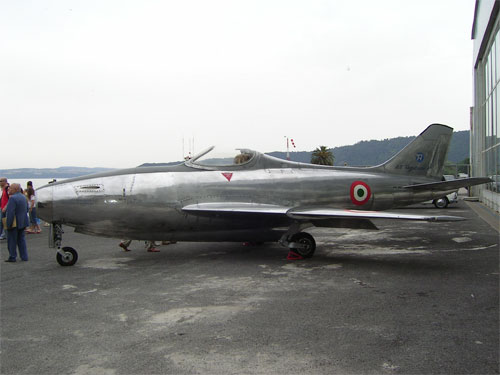Re.2007 never existed as far as i know. A few older books do mention it as a fact but it was proven as a post-war forgery. There are no photos of that allegedly completely finished airframe save for the engines, nor any other trace of material evidence it ever existed - only some blueprints that were drawn in 1960's...

VERO o FALSO? true or false?
I now I'll prove it.

The Reggiane Re.2007 is a rather mysterious subject, and after more than 65 years, little has survived to this day, we know that was a design for a jet fighter began in the final days of the Italian Regia (1942), provided an engine of German origin, namely the Junkers Jumo 004B ... the same as the Me.262 (which only had two).
With slightly swept wings, the real contribution of the longitudinal arrangement seems Re.2007 air intake, the cab and the engine in the same axis, by passing the flow of air around the cabin which was a good solution aerodynamic heritage undoubtedly the Campini Caproni, which is now quite obvious, the plans for the German fighters of that time, although in many ways more advanced, do not use this formula (presempio, often mounted on the cabin air intake)
The prototype almost ready, do not get to mount the Junkers Jumo 004B in the final days of World War II, and no one knows the ultimate fate of this prototype, perhaps destroyed and lost his material ..... o. ... Maybe .................................
the project and mysteriously reappeared here:
http://www.cmpr.it/Aerfer%20Sagittario%202/Aerfer.htm

Aerfer the Sagittarius-2 has nothing similar with Reggiane Re.2007, it's much less seen from outside and inside. In fact if you compare two sections of their planes can see the radical differences in design, clean Re.2007 a lineal arrangement of air intakes behind the cab and the engine Junkers Jumo 008B in the fuselage, L 'Aerfer Sagittarius-2 in return, with a curious arrangement "Diagonal" Rolls Royce Derwent engine-9, with the exhaust heat under the floor of the cabin (the pedals of the pilot dangerously close "cm" of the burners of the Derwent-9).
The temporal distance of the two projects and more than a decade, it is clear that the origins of Aerfer are completely different, if anything, the only similarity is that all the two aircraft segment of the same nationality.

